
Jump squats, also known as plyometric squats, are a type of exercise that combines squatting with jumping. This exercise involves explosive movements that engage multiple muscle groups and offer numerous benefits to those who regularly perform them. In this article, we will discuss the benefits of jump squats and why they should be included in your workout routine.
1. Builds Strength

Jump squats are a strength-building exercise that targets your lower body muscles, including your glutes, quads, hamstrings, and calves. The explosive movement involved in jump squats engages your muscles in a way that traditional squats cannot.
According to a study published in the Journal of Strength and Conditioning Research, performing jump squats can significantly increase lower body strength, power, and speed. This makes it an excellent exercise for athletes who need to build strength and power in their legs.
2. Improves Cardiovascular Health

Jump squats are a high-intensity exercise that can increase your heart rate and improve your cardiovascular health. This exercise can be performed in a circuit or as part of a HIIT (high-intensity interval training) workout, which can help improve your endurance and stamina over time.
According to a study published in the Journal of Sports Science and Medicine, performing jump squats can increase your VO2 max (maximum oxygen uptake) and improve your cardiovascular fitness.
3. Burns More Calories

Jump squats are a great exercise for burning calories and losing weight. This exercise engages multiple muscle groups, which can increase your metabolic rate and help you burn more calories even after your workout is over.
According to a study published in the International Journal of Exercise Science, performing jump squats can burn up to 14 calories per minute, making it an effective exercise for weight loss.
4. Improves Jumping Ability

Jump squats are a great exercise for improving your jumping ability and explosive power. This exercise involves jumping as high as you can after squatting, which can help you jump higher and farther over time.
According to a study published in the Journal of Strength and Conditioning Research, performing jump squats can significantly increase vertical jump height and power.
5. Enhances Balance and Coordination

Jump squats require a high level of balance and coordination, making it an excellent exercise for enhancing these skills. This exercise involves jumping and landing in a controlled manner, which can help improve your overall balance and coordination.
According to a study published in the Journal of Sports Science and Medicine, performing jump squats can improve balance and coordination in athletes.
6. Increases Bone Density

Jump squats are a weight-bearing exercise that can increase your bone density over time. This exercise involves jumping and landing, which can help stimulate bone growth and reduce the risk of osteoporosis.
According to a study published in the Journal of Bone and Mineral Research, performing weight-bearing exercises like jump squats can help increase bone density in postmenopausal women.
Conclusion
Jump squats are an excellent exercise for building strength, improving cardiovascular health, burning calories, enhancing jumping ability, increasing balance and coordination, and increasing bone density. These benefits make it an excellent exercise for athletes, fitness enthusiasts, and anyone looking to improve their overall health and fitness levels.
Related video of Benefits Of Jump Squats
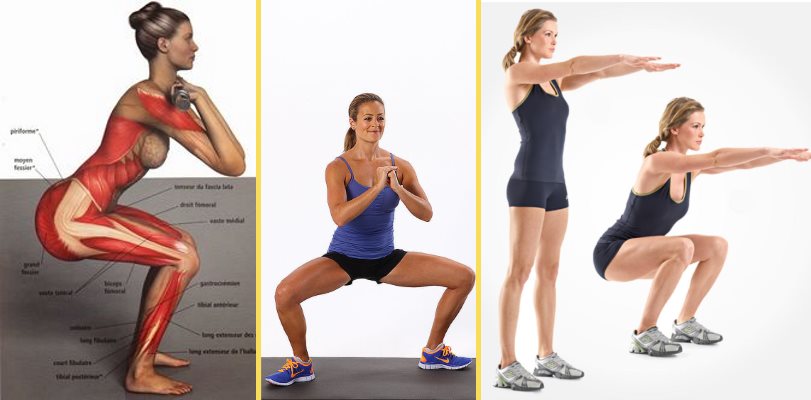
Sumo squat is a popular exercise that works on the muscles of the lower body. This exercise is named after the Japanese wrestlers who perform this exercise as part of their training regimen. Sumo squat is a variation of the traditional squat, which is performed with a wider stance and toes pointed outward. In this article, we will discuss the muscles that sumo squat works on and how to perform this exercise correctly.
The Muscles Worked in Sumo Squat
Sumo squat is an excellent exercise that targets multiple muscles of the lower body, including the quadriceps, glutes, hamstrings, and adductors. Let's take a closer look at each of these muscles:
Quadriceps
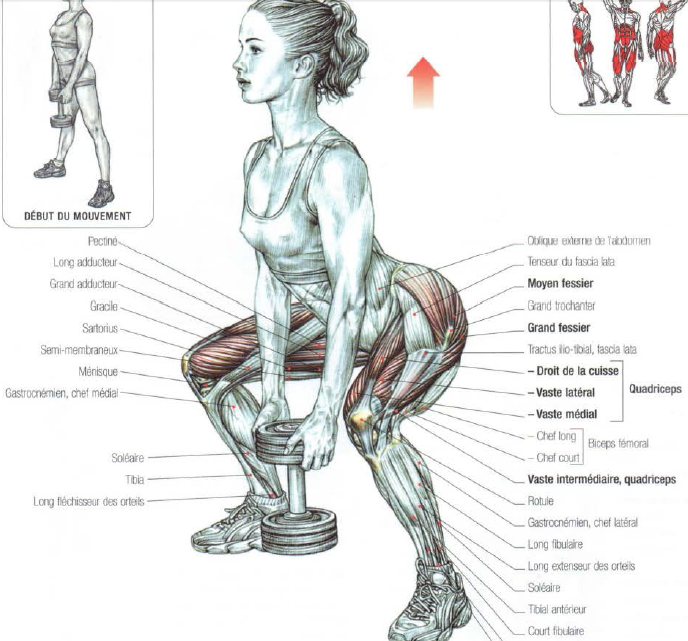
The quadriceps are a group of four muscles located in the front of the thigh. These muscles are responsible for extending the knee and are heavily recruited during sumo squat. The wider stance of sumo squat puts more emphasis on the quadriceps than traditional squats.
Glutes

The glutes, also known as the buttocks muscles, are responsible for hip extension and rotation. Sumo squat targets the gluteus maximus, which is the largest muscle in the glutes. This muscle is responsible for extending the hip and is heavily recruited during sumo squat.
Hamstrings

The hamstrings are a group of three muscles located in the back of the thigh. These muscles are responsible for knee flexion and hip extension. Sumo squat targets the hamstrings, especially the biceps femoris, which is the largest muscle in the hamstrings.
Adductors

The adductors are a group of muscles located in the inner thigh. These muscles are responsible for hip adduction, which is the movement of bringing the legs together. Sumo squat targets the adductors, especially the adductor magnus, which is the largest muscle in the adductors.
How to Perform Sumo Squat Correctly

Here is a step-by-step guide on how to perform sumo squat correctly:
- Stand with your feet wider than shoulder-width apart and toes pointed outward.
- Place your hands on your hips or hold a dumbbell or kettlebell in front of your chest.
- Engage your core and keep your chest lifted throughout the movement.
- Bend your knees and lower your hips, keeping your back straight and chest lifted.
- Lower yourself until your thighs are parallel to the ground or as low as you can comfortably go.
- Push through your heels and squeeze your glutes to stand back up.
Repeat for the desired number of repetitions.
Common Mistakes in Sumo Squat

Here are some common mistakes to avoid when performing sumo squat:
- Allowing your knees to cave inwards
- Not lowering your hips low enough
- Leaning too far forward
- Not engaging your core
By avoiding these mistakes, you can perform sumo squat correctly and effectively target the muscles of the lower body.
Conclusion
Sumo squat is a powerful exercise that targets multiple muscles of the lower body, including the quadriceps, glutes, hamstrings, and adductors. By performing sumo squat correctly and avoiding common mistakes, you can effectively work out these muscles and improve your lower body strength and overall fitness.
Related video of What Muscles Does Sumo Squat Work?
The dumbbell incline bench fly is an excellent exercise for building a strong and defined chest. It targets the upper part of the chest muscles and helps to develop thickness and mass. This exercise is perfect for those who want to add shape and size to their chest, as well as improve their overall upper body strength.

The Benefits of Db Incline Bench Fly
One of the main benefits of the dumbbell incline bench fly is that it helps to isolate the upper part of the chest muscles. This means that you can really focus on developing this area and create a more defined and muscular appearance. Additionally, this exercise helps to improve stability in the shoulders and upper back, which can help to prevent injury.
Another benefit of the db incline bench fly is that it is a compound exercise, meaning that it works multiple muscle groups at once. In addition to the chest muscles, it also targets the shoulders and triceps, helping to create a more balanced and proportionate upper body.

How to Perform Db Incline Bench Fly
To perform the dumbbell incline bench fly, you will need a bench that can be set at an incline. Start by lying face up on the bench with your feet flat on the floor. Hold a dumbbell in each hand with your palms facing each other and your arms extended above your chest.
Slowly lower the dumbbells out to your sides, keeping your elbows slightly bent, until your arms are parallel to the floor. Then, lift the weights back up to the starting position, squeezing your chest muscles together as you do so.
Repeat this movement for 3-4 sets of 8-12 reps, resting for 30-60 seconds between sets. Make sure to use a weight that challenges you without compromising proper form.
Tips for Performing Db Incline Bench Fly Safely and Effectively
When performing the db incline bench fly, it is important to maintain proper form to avoid injury and get the most out of the exercise. Here are some tips to help you perform this exercise safely and effectively:
- Keep your elbows slightly bent throughout the movement to prevent strain on your joints.
- Slowly lower the weights out to your sides, keeping them under control at all times.
- Don't let the weights touch at the top of the movement, as this can take tension off of your chest muscles.
- Breathe deeply throughout the exercise, inhaling as you lower the weights and exhaling as you lift them back up.
- Choose a weight that challenges you without compromising proper form.

Conclusion
The db incline bench fly is an effective exercise for anyone looking to build a strong and defined chest. It targets the upper part of the chest muscles and helps to develop thickness and mass. By performing this exercise safely and effectively, you can get the most out of your workouts and achieve your fitness goals.
Related video of Db Incline Bench Fly: An Effective Exercise for Chest Development

The seated overhead barbell press is a compound exercise that targets the shoulders, triceps, and upper chest. This exercise is commonly used by bodybuilders, powerlifters, and athletes to build strength and muscle mass in the upper body. The seated position allows for greater stability and control compared to standing, making it an ideal exercise for beginners or those with lower back issues.
How to Perform Seated Overhead Barbell Press
1. Begin by sitting on a bench with your feet flat on the ground and your back straight. Grip the barbell with both hands, palms facing away from your body, and lift the barbell to your shoulders.
2. Take a deep breath and press the barbell overhead, extending your arms fully. Keep your core engaged and your back straight throughout the movement.
3. Lower the barbell back to your shoulders with control, exhaling as you lower it down.
4. Repeat for the desired number of reps.
Variations of Seated Overhead Barbell Press

1. Seated Dumbbell Press: Use dumbbells instead of a barbell for a more natural range of motion and greater stabilization work.
2. Arnold Press: Begin with the dumbbells at shoulder height and palms facing your body. As you press the dumbbells overhead, rotate your hands so that your palms face away from your body at the top of the movement.
3. Seated Smith Machine Press: Use a Smith machine instead of a barbell for greater safety and stability.
Tips for Seated Overhead Barbell Press
1. Warm up properly before attempting heavy lifts to prevent injury.
2. Use a weight that challenges you, but allows you to complete the desired number of reps with proper form.
3. Engage your core and keep your back straight throughout the movement to prevent lower back strain.
4. Exhale as you lift the barbell overhead and inhale as you lower it back down.
Benefits of Seated Overhead Barbell Press
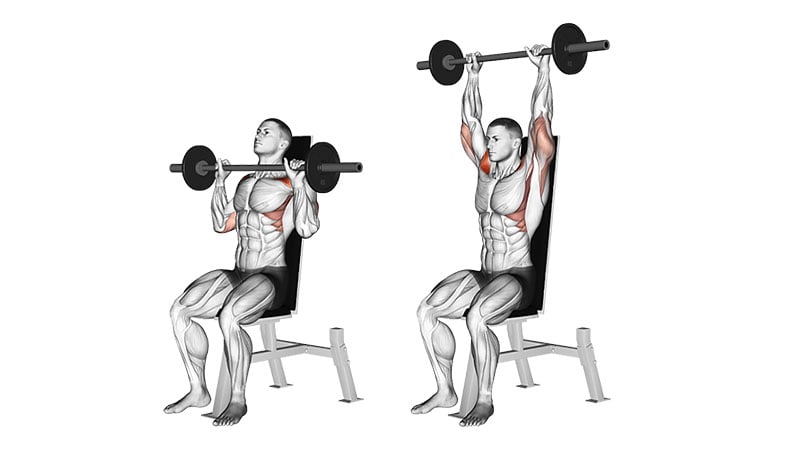
1. Builds strength and muscle mass in the shoulders, triceps, and upper chest.
2. Improves overall upper body stability and control.
3. Can be modified for various fitness levels and goals.
4. Enhances athletic performance by improving shoulder mobility and stability.
Conclusion
The seated overhead barbell press is a powerful exercise that can help you build strength and muscle mass in the upper body. Whether you're a bodybuilder, powerlifter, or athlete, this exercise can help you reach your fitness goals. Remember to warm up properly, use proper form, and challenge yourself with an appropriate weight to get the most out of this exercise.
Related video of Seated Overhead Barbell Press

When it comes to building a strong lower body, squats are one of the best exercises you can do. However, there are many different variations of squats, each targeting different muscles. One of the most effective variations is the dumbbell sumo squat. In this article, we'll take a closer look at the muscles worked during a dumbbell sumo squat and why it's such a great exercise.
What is a Dumbbell Sumo Squat?
A dumbbell sumo squat is a type of squat that involves standing with your feet wider than shoulder-width apart and your toes pointing outwards. You hold a dumbbell in each hand and lower your body down into a squatting position, keeping your back straight and your chest up. The dumbbells are held down by your sides throughout the exercise.
What Muscles are Worked During a Dumbbell Sumo Squat?

A dumbbell sumo squat is a fantastic exercise for working your lower body. It primarily targets your quads, hamstrings, and glutes. These are some of the largest and most important muscles in your body, and working them regularly can help you build strength, power, and endurance.
Quadriceps

Your quadriceps are located on the front of your thigh and are responsible for extending your knee. During a dumbbell sumo squat, your quads are heavily engaged as you lower your body down and then push back up again. This helps to build strength and size in this important muscle group.
Hamstrings

Your hamstrings are located on the back of your thigh and are responsible for flexing your knee and extending your hip. During a dumbbell sumo squat, your hamstrings are also heavily engaged as you lower your body down and then push back up again. This helps to build strength and size in this important muscle group.
Glutes

Your glutes are the muscles in your buttocks and are responsible for extending your hip. During a dumbbell sumo squat, your glutes are heavily engaged as you push back up from the squatting position. This helps to build strength and size in this important muscle group, giving you a toned and shapely backside.
Additional Muscles Worked

While the quads, hamstrings, and glutes are the primary muscles worked during a dumbbell sumo squat, there are a few other muscle groups that are also engaged to a lesser degree. These include:
- Calves
- Adductors (inner thigh muscles)
- Abductors (outer thigh muscles)
- Erector spinae (lower back muscles)
Why is the Dumbbell Sumo Squat Such a Great Exercise?

The dumbbell sumo squat is a fantastic exercise for several reasons:
- It targets some of the largest and most important muscles in your body.
- It can help you build strength, power, and endurance in your lower body.
- It is a compound exercise, meaning it works multiple muscle groups at once.
- It can be done with just a pair of dumbbells, making it a great exercise to do at home or in the gym.
- It can be easily modified to make it more challenging or to target specific muscle groups.
How to Do a Dumbbell Sumo Squat

If you're new to the dumbbell sumo squat, here's how to do it:
- Stand with your feet wider than shoulder-width apart and your toes pointing outwards.
- Hold a dumbbell in each hand down by your sides with your palms facing inwards.
- Lower your body down into a squatting position, keeping your back straight and your chest up.
- Pause for a moment at the bottom of the squat, then push back up to the starting position.
- Repeat for your desired number of reps.
Conclusion
The dumbbell sumo squat is an excellent exercise for building strength, power, and endurance in your lower body. It primarily targets your quads, hamstrings, and glutes, but also works several other muscle groups to a lesser degree. Whether you're a beginner or an experienced lifter, the dumbbell sumo squat is a great exercise to add to your workout routine.
Related video of Dumbbell Sumo Squat Muscles Worked

Dumbbell RDLs, or Romanian Deadlifts, are a great exercise for targeting your hamstrings, glutes, and lower back muscles. They also help improve your posture, balance, and overall strength. In this article, we will guide you on how to do dumbbell RDLs correctly, step by step.
Step 1: Preparation

Start by standing with your feet shoulder-width apart and your knees slightly bent. Hold a pair of dumbbells in front of your thighs, with your palms facing your body. Engage your core muscles and keep your shoulders back and down.
Step 2: Movement

Slowly hinge forward at your hips, pushing your glutes back as you lower the dumbbells towards the ground. Keep your spine straight and your head in a neutral position. Lower the dumbbells as far as you can while maintaining a slight bend in your knees. You should feel a stretch in your hamstrings.
Step 3: Return

Squeeze your glutes and hamstrings to pull yourself back up to the starting position. Keep your back straight and your shoulders down. Exhale as you come up. Repeat for the desired number of repetitions.
Common Mistakes to Avoid

Here are some common mistakes to avoid when doing dumbbell RDLs:
- Using your lower back to lift the dumbbells instead of your hamstrings and glutes. This can lead to injury.
- Not keeping your shoulders back and down. This can cause strain in your neck and shoulders.
- Not engaging your core muscles. This can cause your back to arch and lead to injury.
- Not maintaining a slight bend in your knees. Locking out your knees can cause strain in your joints.
Variations

Here are some variations of dumbbell RDLs that you can try:
- Single-leg dumbbell RDLs: This variation targets each leg individually and improves balance.
- Sumo dumbbell RDLs: This variation targets your inner thighs and glutes.
- Staggered dumbbell RDLs: This variation improves your stability and targets your hamstrings and glutes.
Conclusion
Dumbbell RDLs are a great exercise for targeting your hamstrings, glutes, and lower back muscles. By following these steps and avoiding common mistakes, you can perform dumbbell RDLs safely and effectively. Don't forget to mix it up with different variations for a more challenging workout.
Related video of How To Do Dumbbell RDLs
If you're looking for a full-body exercise that targets multiple muscle groups at once, look no further than the dumbbell squat to press. This compound exercise combines a squat and an overhead press, making it an excellent choice for anyone looking to build strength, burn fat, and improve their overall fitness.
What is the Dumbbell Squat To Press?

The dumbbell squat to press is a compound exercise that involves holding a pair of dumbbells at your shoulders, performing a squat, then standing up and pressing the dumbbells overhead. This exercise targets multiple muscle groups, including your legs, glutes, shoulders, and core.
How to Perform the Dumbbell Squat To Press
To perform the dumbbell squat to press, follow these steps:
- Start by holding a pair of dumbbells at your shoulders, with your feet shoulder-width apart.
- Squat down, keeping your knees behind your toes and your chest up.
- As you stand up, press the dumbbells overhead, extending your arms fully.
- Lower the dumbbells back to your shoulders and repeat for the desired number of reps.
Benefits of the Dumbbell Squat To Press
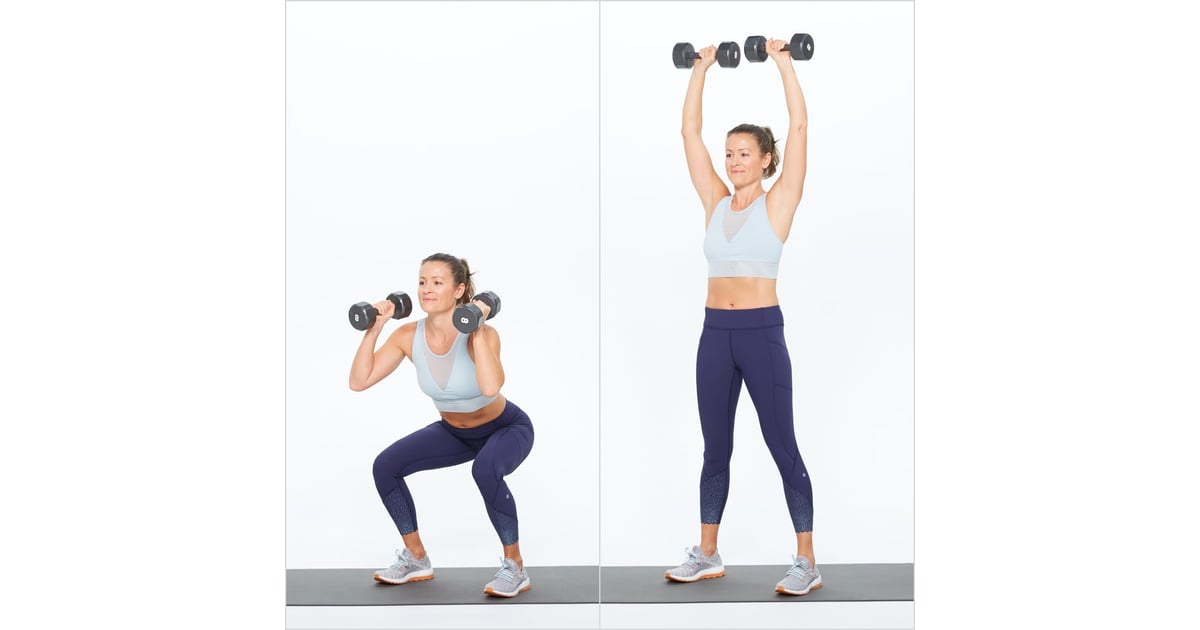
The dumbbell squat to press is a highly effective exercise for several reasons:
- It targets multiple muscle groups, making it a great full-body exercise.
- It improves your overall strength and power.
- It can help you build muscle and burn fat at the same time.
- It's a functional exercise that mimics movements you use in everyday life.
Variations of the Dumbbell Squat To Press

If you're looking to mix things up, there are several variations of the dumbbell squat to press you can try:
- Single-arm dumbbell squat to press
- Dumbbell thruster
- Barbell squat to press
- Kettlebell squat to press
Conclusion
The dumbbell squat to press is a highly effective full-body exercise that can help you build strength, burn fat, and improve your overall fitness. Whether you're a beginner or an experienced gym-goer, this exercise is a great addition to any workout routine. So grab a pair of dumbbells and give it a try!
Related video of Dumbbell Squat To Press: The Ultimate Full-Body Exercise
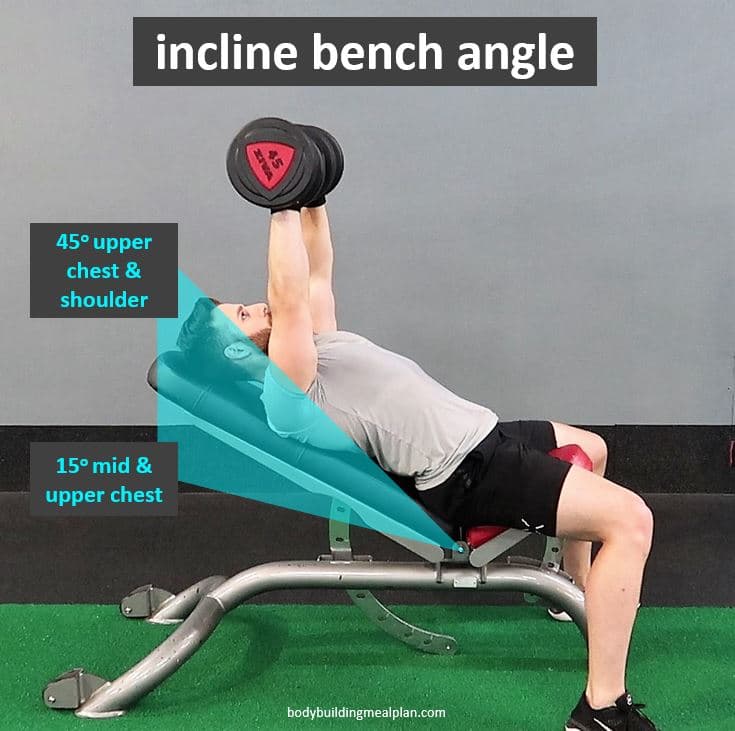
The incline dumbbell press is a popular exercise for building a stronger, more defined chest. By changing the angle of the bench, you can target different areas of your chest and create a more well-rounded look. In this article, we'll discuss the best angle for incline dumbbell press and how to properly perform the exercise.
Why Is the Incline Dumbbell Press Important?

The incline dumbbell press is important because it targets the upper portion of the chest muscles, which is often neglected in other chest exercises. By developing this area, you can create a more defined and aesthetically pleasing chest. Additionally, the incline dumbbell press can help improve your bench press and overall upper body strength.
What Is the Best Angle for Incline Dumbbell Press?

The best angle for incline dumbbell press depends on your individual goals and body type. Generally, a 45-degree angle is recommended for targeting the upper chest muscles. However, if you have longer arms, you may need to adjust the angle slightly to avoid discomfort in your shoulders or wrists.
How to Perform Incline Dumbbell Press
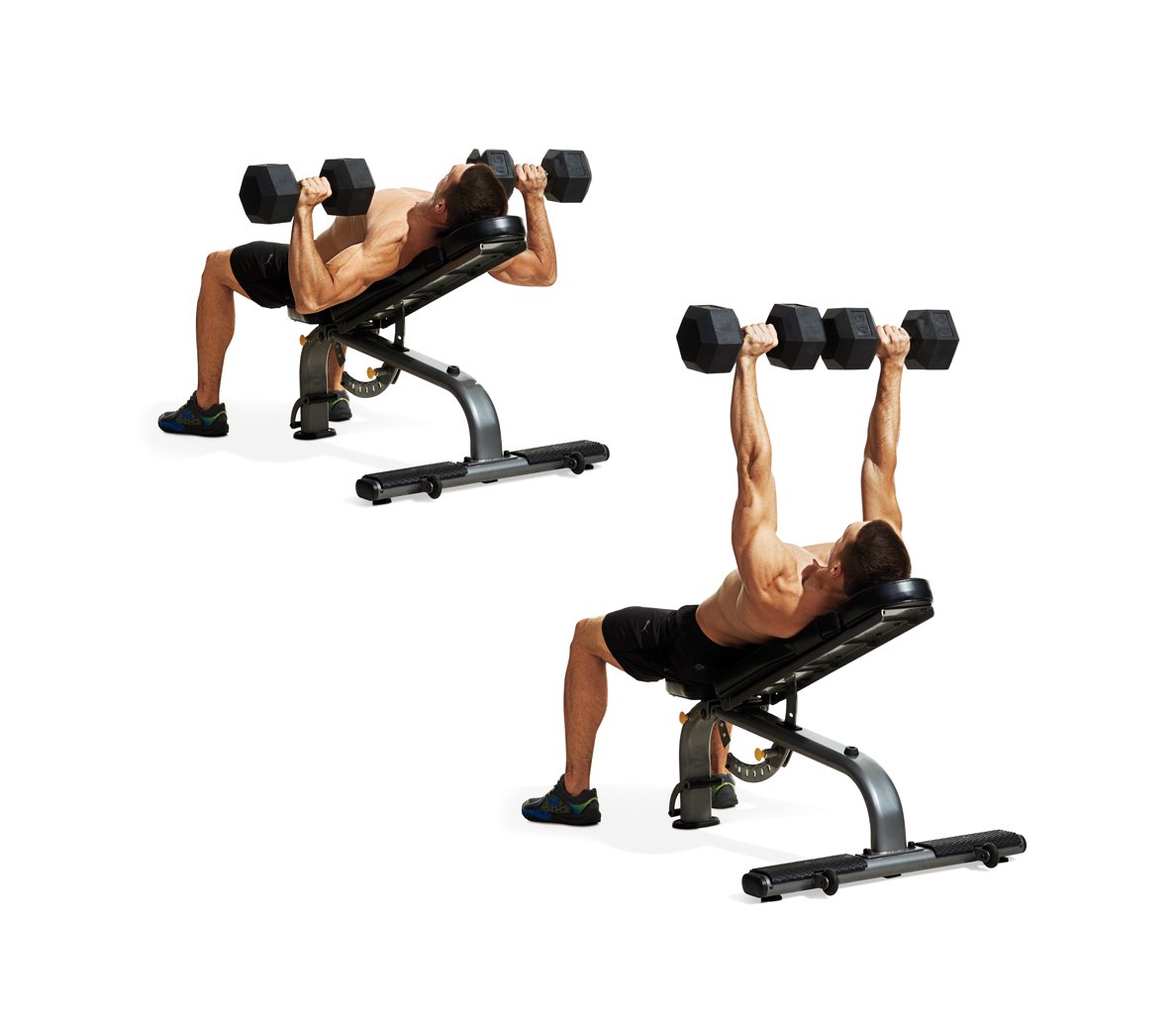
To perform incline dumbbell press, follow these steps:
- Set up an incline bench at the desired angle.
- Grab two dumbbells and sit on the bench.
- Lie back with the dumbbells at shoulder level.
- Push the dumbbells straight up until your arms are fully extended.
- Lower the dumbbells back down to shoulder level.
- Repeat for the desired number of reps.
Tips for Proper Form

To get the most out of your incline dumbbell press, follow these tips for proper form:
- Keep your elbows tucked in to your sides.
- Lower the dumbbells slowly and under control.
- Keep your core engaged and your back flat against the bench.
- Exhale as you push the dumbbells up and inhale as you lower them.
- Avoid locking out your elbows at the top of the movement.
Variations of Incline Dumbbell Press

There are several variations of incline dumbbell press that you can try to change up your workout and target different areas of your chest. Some popular variations include:
- Incline dumbbell flyes
- Incline bench press with a barbell
- Single arm incline dumbbell press
- Decline dumbbell press
Conclusion
The incline dumbbell press is an effective exercise for building a stronger, more defined chest. By adjusting the angle of the bench, you can target different areas of your chest and create a more well-rounded look. Remember to always use proper form and start with a weight that allows you to complete the exercise with good technique. With consistency and effort, you can achieve your desired chest development and overall upper body strength.
Related video of Angle For Incline Dumbbell Press: How to Maximize Your Chest Workout

The Half Kneel Wood Chop is a core strengthening exercise that targets the obliques, rectus abdominis, and transverse abdominis. It is a compound movement that involves both upper and lower body muscles. This exercise is also beneficial for improving posture, stability, and balance.
How to Perform Half Kneel Wood Chop

To perform the Half Kneel Wood Chop:
- Start by kneeling on one knee and placing the other foot in front of you.
- Hold a dumbbell or medicine ball with both hands and extend your arms above your head.
- Engage your core and rotate your torso towards the knee that is on the ground.
- As you rotate, bring the weight down towards the outside of your knee.
- Return to the starting position and repeat for the desired number of repetitions before switching sides.
It is important to maintain proper form throughout the exercise. Keep your back straight, engage your core, and avoid using momentum to lift the weight.
Variations of Half Kneel Wood Chop

There are several variations of the Half Kneel Wood Chop that can be incorporated into your workout routine:
- Single Arm Half Kneel Wood Chop: Perform the exercise with only one arm while holding the weight with both hands.
- Standing Wood Chop: Stand with your feet shoulder-width apart and perform the exercise with a cable machine or resistance band.
- Reverse Wood Chop: Start with the weight at your side and lift it diagonally towards the opposite shoulder.
Benefits of Half Kneel Wood Chop

The Half Kneel Wood Chop offers several benefits:
- Core Strength: The exercise targets the abdominal muscles and strengthens the core.
- Improved Posture: The exercise improves spinal alignment and posture.
- Better Balance: The exercise improves balance and stability.
- Compound Movement: The exercise involves both upper and lower body muscles, making it a compound movement.
Precautions and Tips
Before performing the Half Kneel Wood Chop, it is important to keep the following precautions and tips in mind:
- Consult a Doctor: Consult your doctor before starting any new exercise routine, especially if you have any medical conditions or injuries.
- Start Slow: Begin with light weights and gradually increase the weight as you become more comfortable with the exercise.
- Maintain Proper Form: Keep your back straight, engage your core, and avoid using momentum to lift the weight.
- Breathe: Inhale as you lift the weight and exhale as you lower it.
Conclusion
The Half Kneel Wood Chop is an effective exercise for strengthening the core, improving posture, and enhancing balance and stability. It is a compound movement that involves both upper and lower body muscles. It is important to maintain proper form and consult your doctor before starting any new exercise routine.